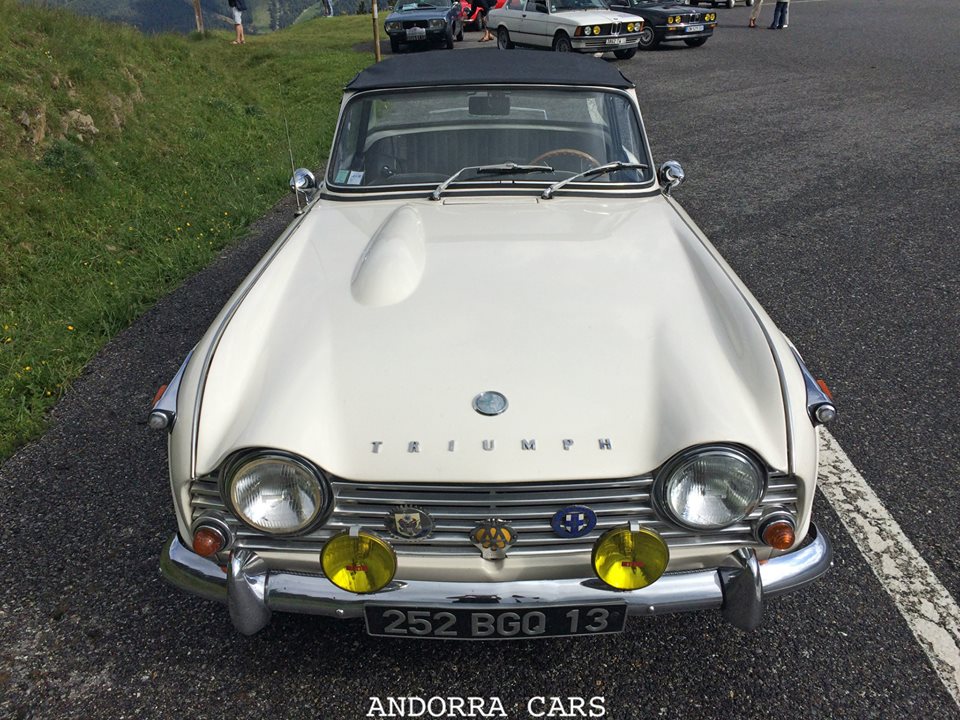Triumph TR4: white cabriolet
The Triumph TR4 is a sports car produced by the Triumph Motor Company from 1961 to 1965. As the successor to the TR3A, the car was based on the chassis and drivetrain of the previous TR sports cars, but with a modern body designed by Michelotti.
In spite of its modern styling, a total of only 40,253 cars were built during its 5-year production run. In comparison, the TR2 sold 8,635 units in its 3-year run from 1953–1955; 74,800 TR3s in an 8-year run from 1955 to 1962; 94,500 TR6s in an 9-year run from 1968–1976 and 111,500 TR7s over a 7-year run from 1975–1981.
The pushrod Standard inline-four engine, was designed for use by the Ferguson TE20 tractor. The TR4 engine was continued from the earlier TR2/3 models, but the displacement was increased from 1991cc to 2138 cc in the TR4 by increasing bore size. Gradual improvements in the manifolds and cylinder head allowed for some improvements culminating in the TR4A model.
The 1991 cc engine became a no-cost option for those cars destined to race in the under-two-litre classes of the day. Some cars were fitted with vane-type superchargers, as the three main bearing engine was prone to crankshaft failure if revved beyond 6,500 rpm; superchargers allowed a TR4 to produce much more horsepower and torque at relatively modest revolutions.
The standard engine produced 105 bhp (78 kW) SAE but, supercharged and otherwise performance-tuned, a 2.2-litre I4 version could produce in excess of 200 bhp (150 kW) at the flywheel. The TR4, in common with its predecessors, was fitted with a wet-sleeve engine, so that for competition use the engine’s cubic capacity could be changed by swapping the cylinder liners and pistons, allowing a competitor to race under different capacity rules (i.e. below or above 2 litres for example).












